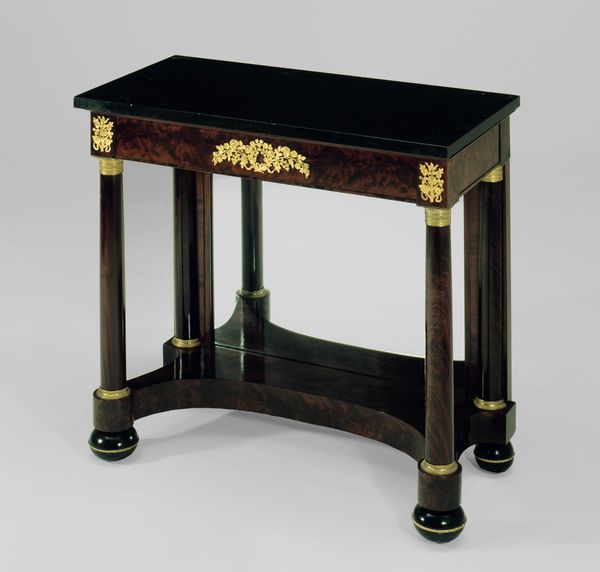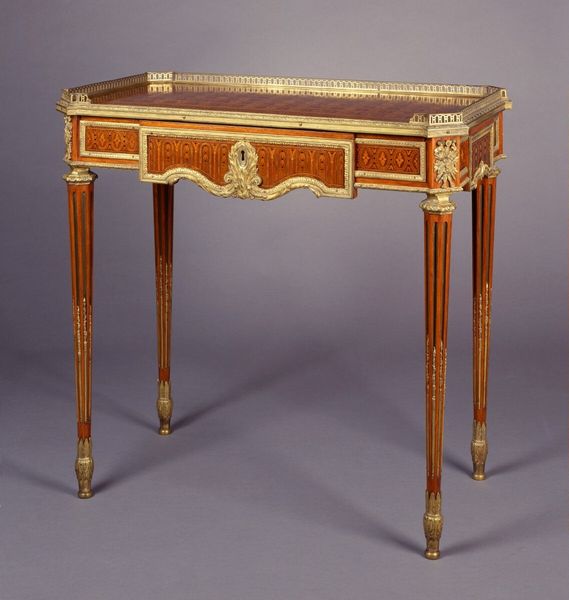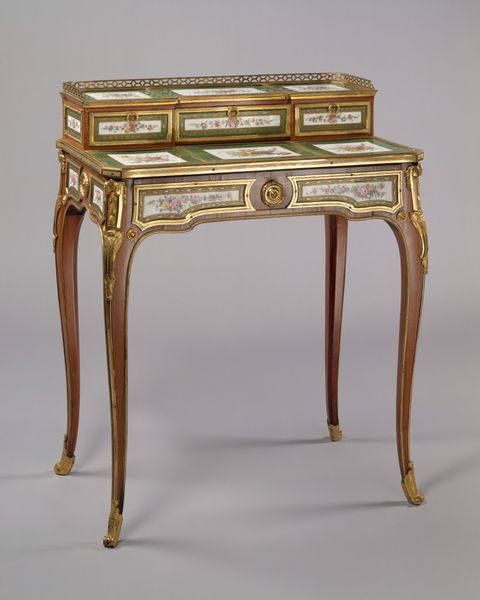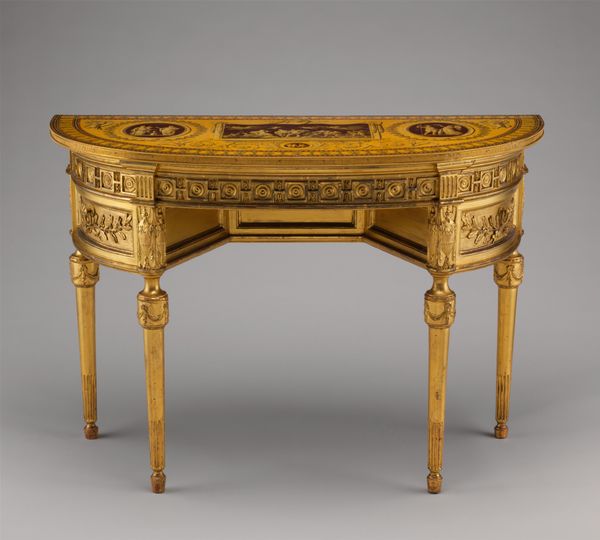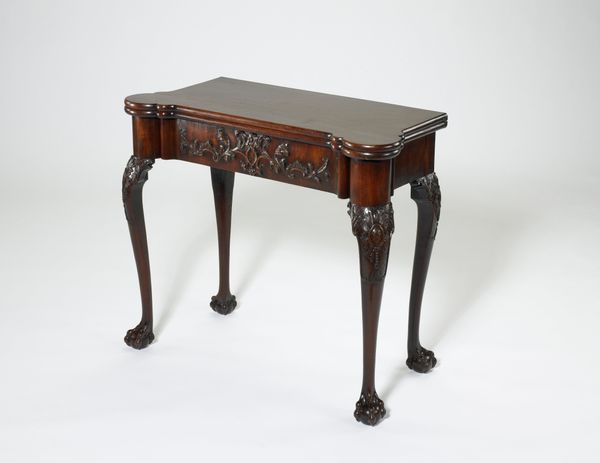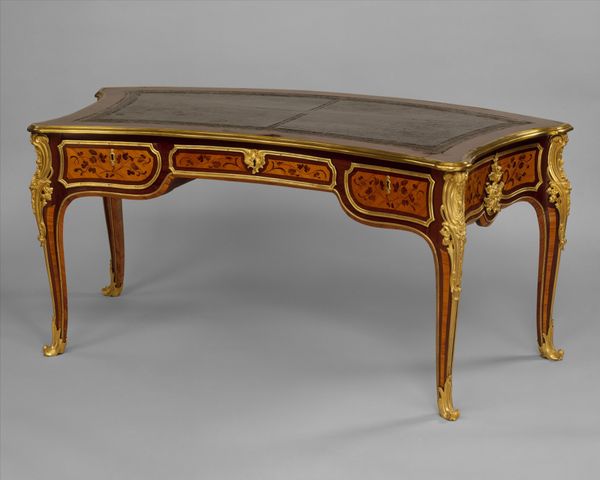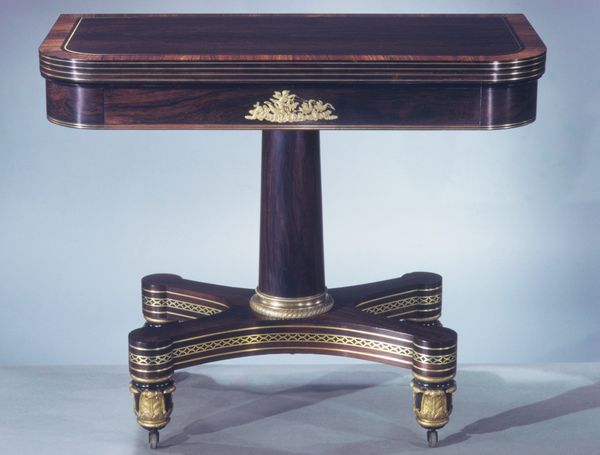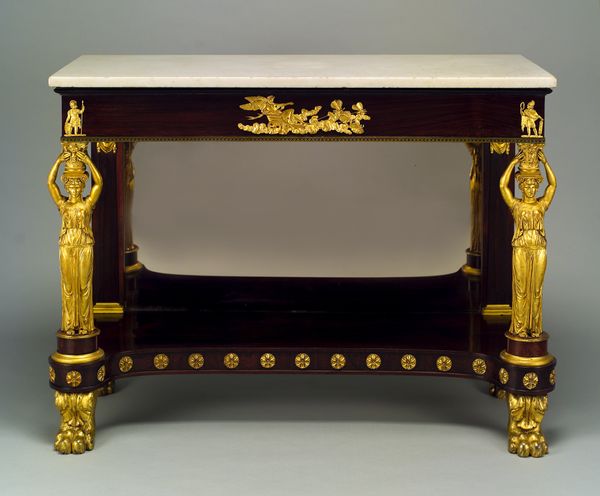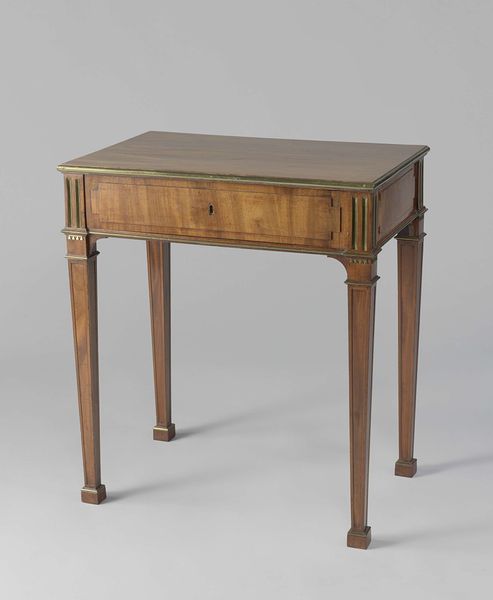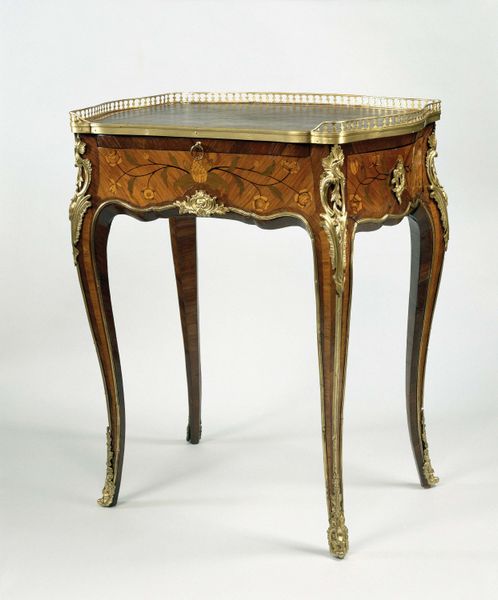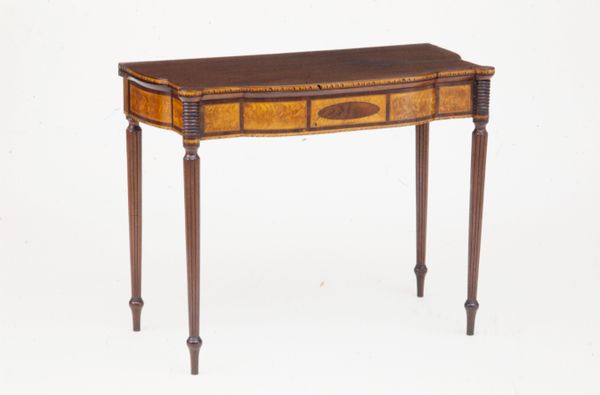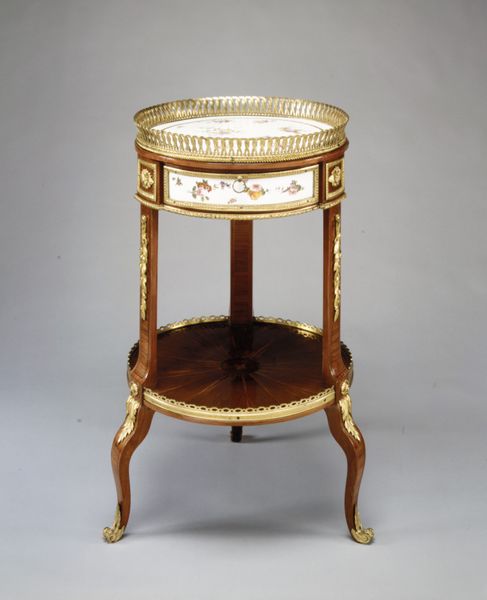
mixed-media, painting, wood
#
neoclacissism
#
mixed-media
#
painting
#
sculpture
#
landscape
#
wood
#
cityscape
#
genre-painting
#
decorative-art
Dimensions: 28 7/8 x 36 x 17 1/2 in. (73.3 x 91.4 x 44.5 cm)
Copyright: Public Domain
Curator: Ah, "Card Table," created sometime between 1800 and 1810, currently held at the Metropolitan Museum of Art. A striking example of Neoclassical decorative art! Editor: Elegant, isn't it? I imagine it placed perfectly in a room bathed in gentle light, perhaps with someone dealing out cards... though I wonder how comfortable it really is? It's all rather sharp edges. Curator: It’s a fascinating object because it combines different mediums: wood construction, with areas of painting to enhance the aesthetic. Notice the tiny cityscape at the table's front? These weren’t mass-produced items; their craftsmanship tells a story of the social context that produced them. Editor: That cityscape— it's trying to evoke, isn't it? A little world. A painted escape for idle hands during a long card game! It's more than functional; it aspires. Although those straight lines make me feel so...square. I much prefer curves! Curator: Precisely. And observe how Neoclassical forms adopted motifs like rosettes, all these design elements elevated what could’ve been simple furniture into expressions of taste. They signalled cultural sophistication! Editor: Signaling is key, I think. All these material items exist inside stories, inner dialogues as much as they do the world around. This one has secrets—or the *promise* of secrets anyway, that hushed dark surface begging you to lean in, lower your voice... Curator: Absolutely. Each mark carries weight, a silent testimony to both maker and owner; from materials to manufacturing, it reflects more than decor preferences, providing insights into their class and tastes. Editor: Perhaps the greatest works function that way; as artifacts which also reflect back on those who make and cherish them! Curator: I completely agree. And in studying how its very production fits neatly within Neoclassical aesthetics, we understand shifts from pure functionality towards symbolic representations that held power... Editor: And looking at this, imagining its makers and users all at once, one can’t help but wonder… who really had the best hand at the end of the night?
Comments
No comments
Be the first to comment and join the conversation on the ultimate creative platform.
